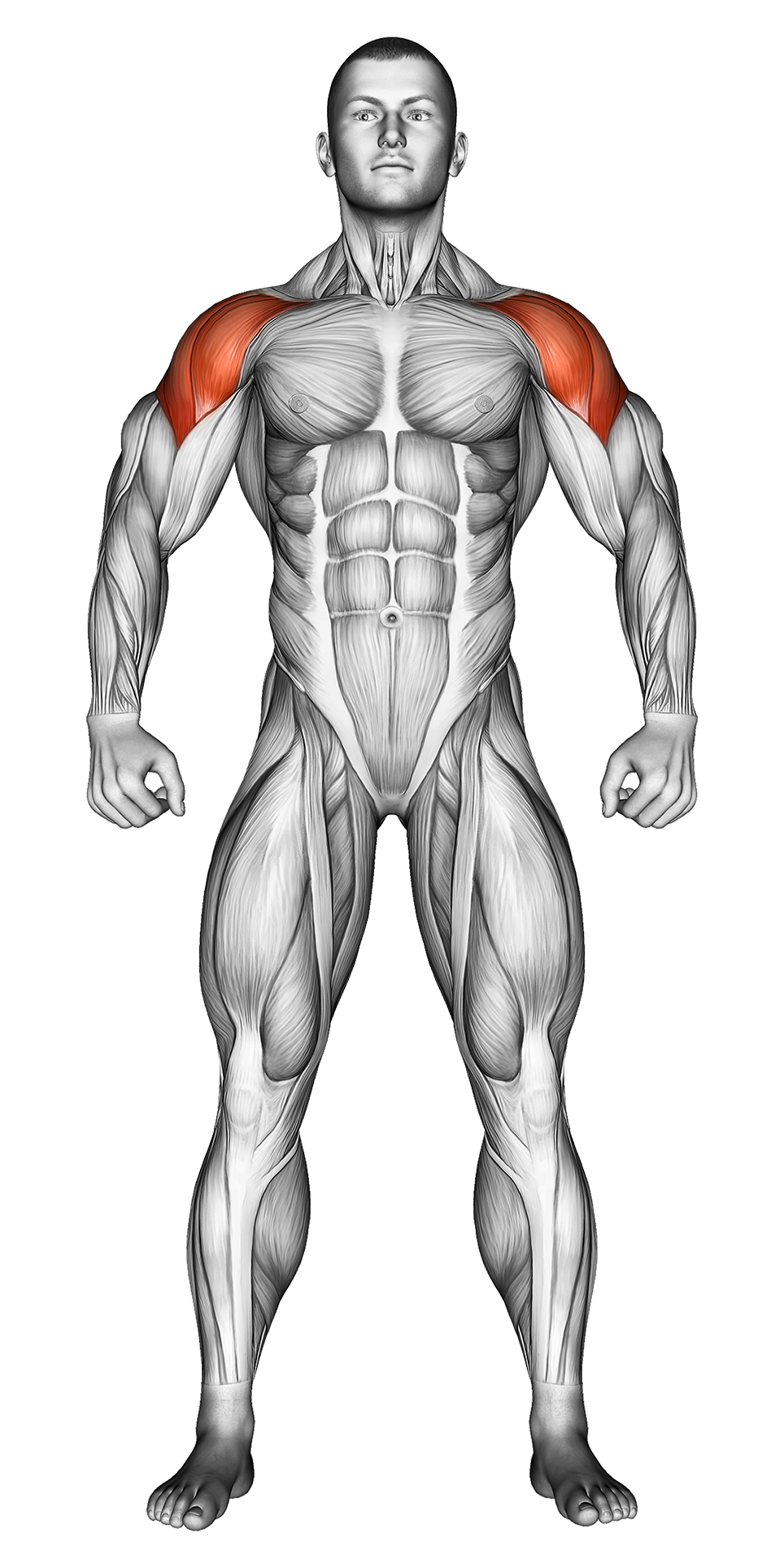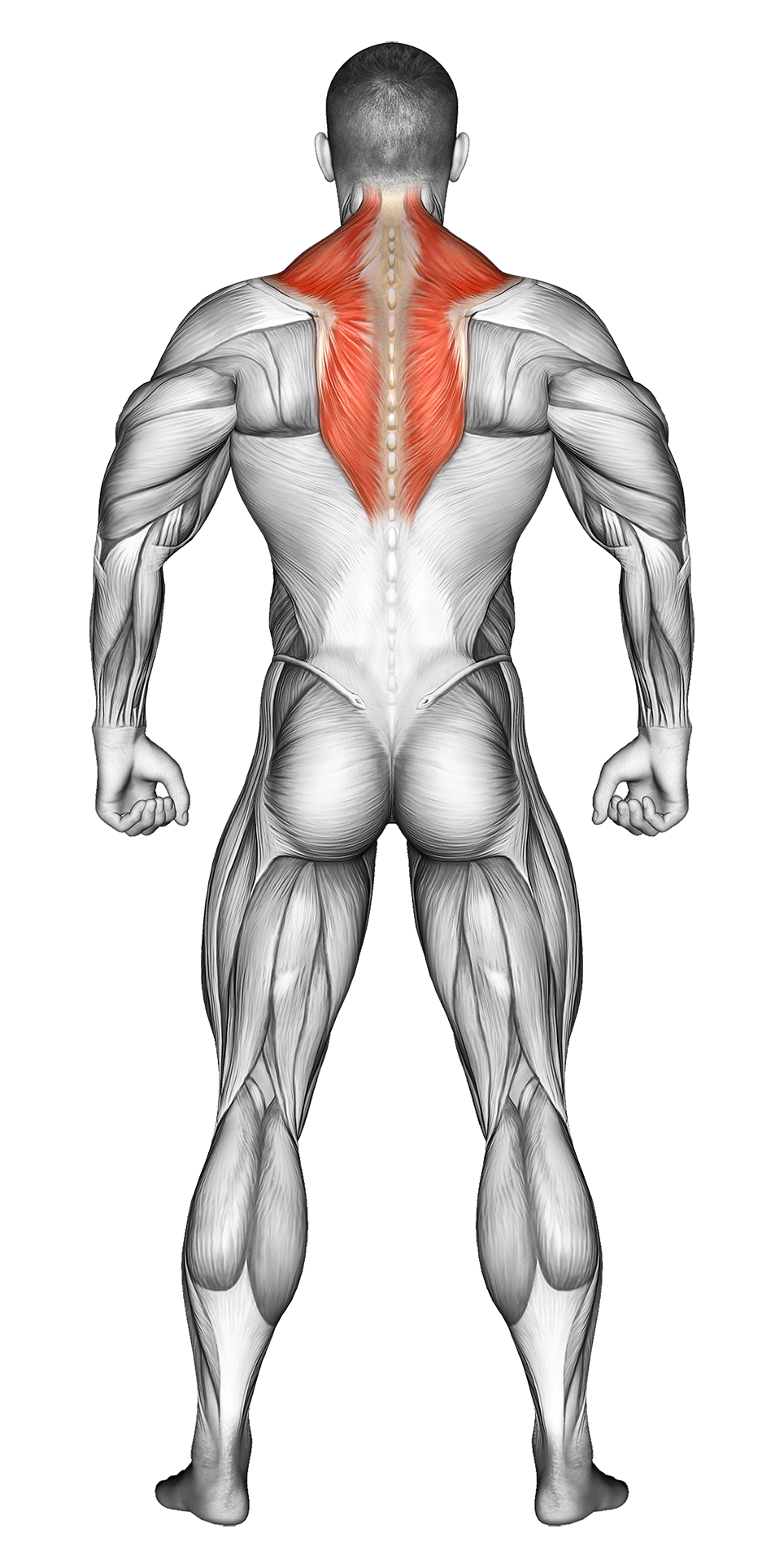Dumbbell Lateral Raise: Video Tutorial & Exercise Guide
| Workout | Dumbbell Lateral Raise |
| Primary Muscle Group | Shoulders |
| Secondary Muscle Group | Traps |
| Equipment Required | Dumbbell |
| Force Type | Pull |
| Mechanics | Isolation |
| Exercise Type | Strength |
| Difficulty | Beginner |
Dumbbell Lateral Raise: Video Tutorial & Exercise Guide
Muscle Groups
- Primary Muscle Group- Secondary Muscle Group
Dumbbell Lateral Raise - Step-by-Step Guide
Dumbbell Lateral Raise Overview
Benefits of Dumbbell Lateral Raise
Dumbbell Lateral Raise Pro Tips & Advanced Techniques
Progression Plan for Dumbbell Lateral Raise
Frequently Asked Questions (FAQs) Of Dumbbell Lateral Raise
Secondary Muscles
How to do the Dumbbell Lateral Raise – Step-by-Step Guide
- Step 1: Stand with your feet shoulder-width apart, holding a dumbbell in each hand at your sides, palms facing inward toward your body.
- Step 2: Engage your core, keep a slight bend in your knees, and your back straight. This is your starting position.
- Step 3: With a slight bend in your elbows, raise the dumbbells out to your sides until your arms are parallel to the floor. Your palms should be facing the ground, and your elbows slightly higher than your wrists.
- Step 4: Pause briefly at the top of the movement, keeping tension on your shoulders.
- Step 5: Slowly lower the dumbbells back down to your sides, maintaining control throughout. Repeat for the desired number of reps.
Dumbbell Lateral Raise Overview
The Dumbbell Lateral Raise is an isolation exercise that primarily targets the lateral (middle) deltoids, helping to build shoulder width and create a more defined and balanced shoulder appearance. It is an essential exercise in any shoulder workout routine, focusing on the side of the delts to create the appearance of broader shoulders.
This exercise is suitable for all fitness levels and can be easily modified by adjusting the weight. It is often included in upper body routines to enhance shoulder aesthetics, strength, and endurance.
Benefits of Dumbbell Lateral Raises
Dumbbell Lateral Raises are highly effective for isolating the lateral delts, which contribute to shoulder width and roundness. This exercise helps build shoulder strength and symmetry, improving the overall appearance of the upper body.
Additionally, Lateral Raises improve shoulder mobility and stability, which can benefit performance in other upper body movements like presses and rows. By engaging the deltoids and trapezius, this exercise promotes overall shoulder health and function.
Dumbbell Lateral Raise: Pro Tips & Advanced Techniques
Avoid using momentum to lift the weights by focusing on a controlled and slow movement. To ensure your delts are fully engaged, keep your elbows slightly higher than your wrists during the lift. For added intensity, slow down the eccentric (lowering) phase, or add a pause at the top of the movement to increase time under tension. You can also perform seated lateral raises to minimize the use of momentum.
Progression Plan for Dumbbell Lateral Raises
| Level | Sets | Reps | Weight Progression |
|---|---|---|---|
| Beginner | 2-3 | 10-12 | Start with lighter weights, focusing on form and keeping your arms parallel to the ground. |
| Intermediate | 3-4 | 12-15 | Increase the weight slightly and focus on controlling the movement, especially during the lowering phase. |
| Advanced | 4-5 | 15-20 | Use heavier weights or perform the movement more slowly to increase time under tension. Seated lateral raises can also be used for greater isolation. |
Frequently Asked Questions (FAQs) of Dumbbell Lateral Raise
What muscles do Dumbbell Lateral Raises target?
Dumbbell Lateral Raises primarily target the lateral deltoids (middle shoulder muscles) but also engage the trapezius and other stabilizing muscles in the shoulder.
Are Dumbbell Lateral Raises suitable for beginners?
Yes, Dumbbell Lateral Raises are beginner-friendly. Start with light weights and focus on mastering the form before increasing the load.
How often should I perform Dumbbell Lateral Raises?
Incorporate Dumbbell Lateral Raises into your upper body or shoulder workout 1-2 times per week, allowing adequate recovery time between sessions.
What common mistakes should I avoid?
Avoid swinging the dumbbells or using momentum to lift the weights. Focus on controlled movements and keep your elbows slightly higher than your wrists during the lift.
How can I make Dumbbell Lateral Raises more challenging?
To increase difficulty, you can use heavier dumbbells, slow down the lowering phase, or perform seated lateral raises to eliminate the use of momentum.
Share

